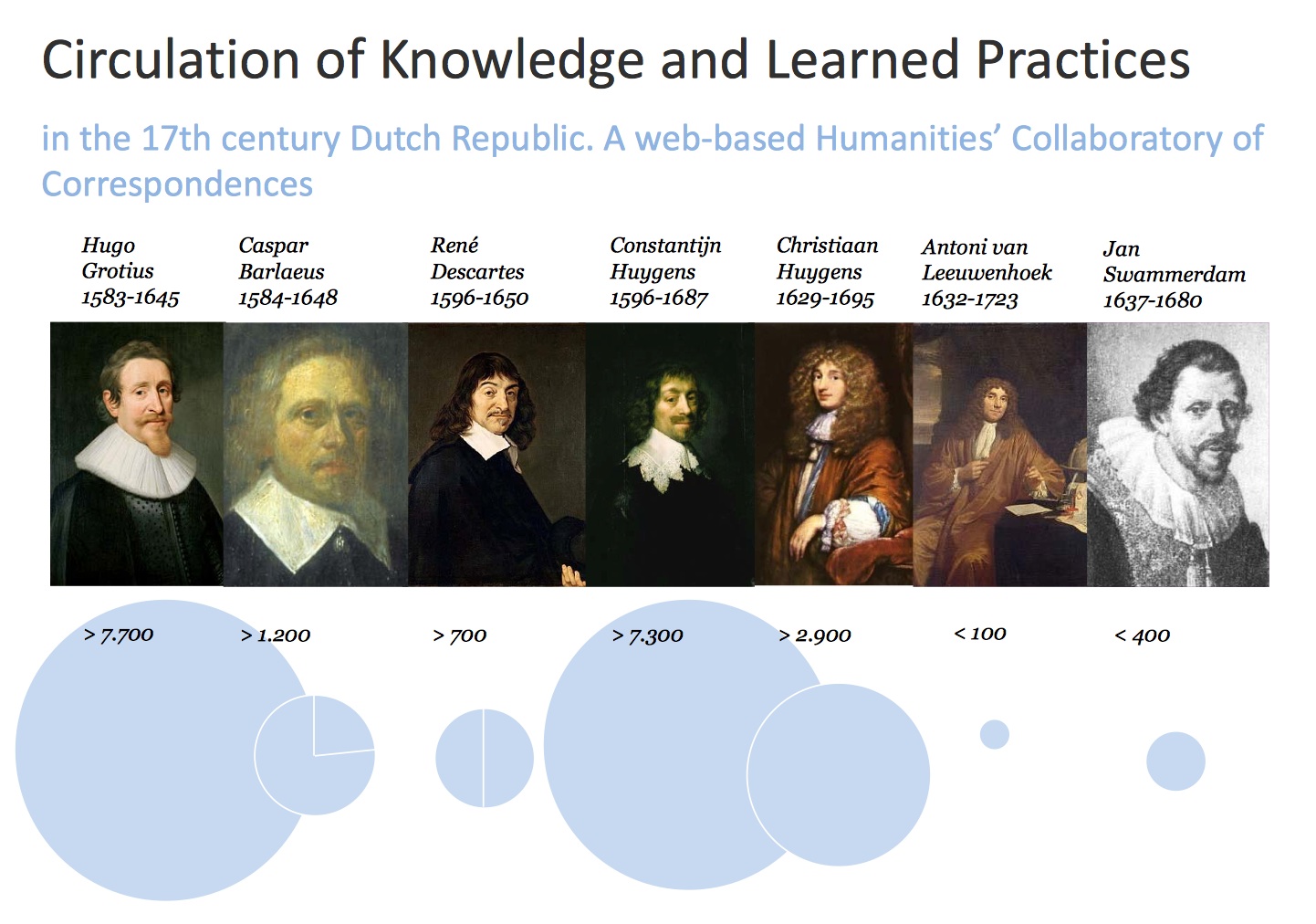TTNWW
TTNWW integrates and makes available existing Language Technology (LT) software components for the Dutch language that have been developed in the STEVIN and CGN projects.
The LT components are made available as web-services in a simplified workflow system that enables researchers without much technical background to use standard LT workflow recipes.
The web services are available in two separate domains: "Text" and "Speech" processing. The TTNWW services have been created in a Dutch and Flemish collaboration project building on the results of past Dutch and Flemish projects. The web services are partly deployed in the SURF-SARA BiG-Grid cloud or at CLARIN centres in the Netherlands and at CLARIN VL University partners.
CKCC

CKCC - Scholarly Letters
SummaryHuygens ING
CLARIN B centre
Huygens Institute for Netherlands History aims to make the expertise of humanities researchers collaborate closely with specialists in e-Humanities.It consciously sustains traditional humaniora expertise and accommodate historians and textual scholars for all periods. It is the largest humanities research institute in the Netherlands and part of the KNAW and arose from the combination of the Huygens Institute and the Institute for the History of the Netherlands (ING).
Polimedia
PoliMedia links the minutes of the debates in the Dutch Parliament (Dutch Hansard) to the databases of historical newspapers and ANP radio bulletins to allow cross-media analysis of coverage in a uniform search interface.
VK
The enriched publication of the important Dutch historiographical work Het Koninkrijk der Nederlanden in de Tweede Wereldoorlog (The Kingdom of the Netherlands in WWII) by Dr. Loe de Jong.
MIGMAP
MIGMAP is a web application that can show migration flow between Dutch municipalities. The user first chooses generation (forward or backward in time) and gender, while subsequently the migration map of The Netherlands related to an interactively pointed municipality (or other aggregation unit) is shown.
WAHSP/BILAND/TexCavator
WAHSP/BILAND is a research tool for historians that uses textual data of news media from the period 1863-1940 of the Koninklijke Bibliotheek and Staatsbibliothek zu Berlin as input material. One can search with single query terms or with combinations thereof. Apart from showing the articles that match the query, the results can be visualized by word clouds of single articles together with sentiment words highlighted, or by a word cloud of the whole result set together with newspaper statistics derived from their metadata. The WAHSP and BILAND applications have been succeeded by the TexCavator application. Links below are to TexCavator.
WIP
An advanced search engine for the OCR-ed scanned image collection of proceedings of the Dutch Hansard (Handelingen der Staten-Generaal 1930-1995). These proceedings are available as a fully annotated semi-structures dataset for historical and social science research. The output of the search engine can be restricted by speaker name, party, date range, and other criteria.
INTER-VIEWS
A corpus of 250 interviews from the Living Oral History Workbench enriched with commentary in the Oral History Annotation tool, developed by the Centre for Language and Speech Technology (CLST) at the Radboud University Nijmegen. All 250 interviews are searchable through a fragment finder and can be annotated. These annotations can be shared with other researchers, making the interviews available and easier accessible for a much wider range of researchers in the humanities in general and in linguistics in particular.
The Annotation Tool is only available for scientific research and only after approval by the Veterans Institute.
